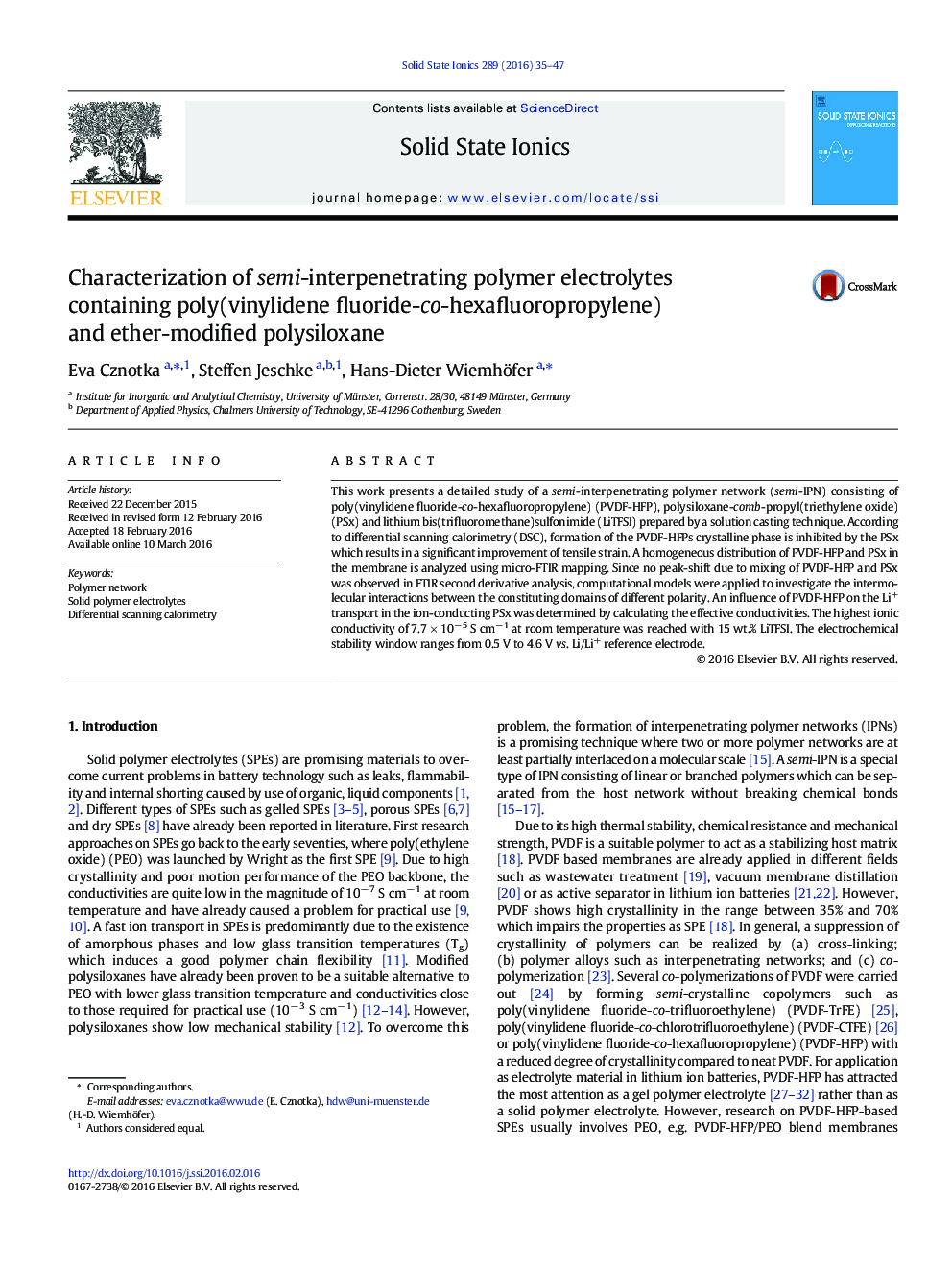| Article ID | Journal | Published Year | Pages | File Type |
|---|---|---|---|---|
| 1296150 | Solid State Ionics | 2016 | 13 Pages |
•A semi-IPN based on PVDF-HFP and ether-modified polysiloxane was prepared.•No interactions between PVDF-HFP and ether-modified siloxane were revealed.•Preferred miscibility of ether/PVDF-HFP was observed by computational analysis.•Electrochemical stability window from 0.5 V to 4.6 V vs. Li/Li+.•Effective conductivity verified implicit contribution of PVDF-HFP to Li+.
This work presents a detailed study of a semi-interpenetrating polymer network (semi-IPN) consisting of poly(vinylidene fluoride-co-hexafluoropropylene) (PVDF-HFP), polysiloxane-comb-propyl(triethylene oxide) (PSx) and lithium bis(trifluoromethane)sulfonimide (LiTFSI) prepared by a solution casting technique. According to differential scanning calorimetry (DSC), formation of the PVDF-HFPs crystalline phase is inhibited by the PSx which results in a significant improvement of tensile strain. A homogeneous distribution of PVDF-HFP and PSx in the membrane is analyzed using micro-FTIR mapping. Since no peak-shift due to mixing of PVDF-HFP and PSx was observed in FTIR second derivative analysis, computational models were applied to investigate the intermolecular interactions between the constituting domains of different polarity. An influence of PVDF-HFP on the Li+ transport in the ion-conducting PSx was determined by calculating the effective conductivities. The highest ionic conductivity of 7.7 × 10− 5 S cm− 1 at room temperature was reached with 15 wt.% LiTFSI. The electrochemical stability window ranges from 0.5 V to 4.6 V vs. Li/Li+ reference electrode.
